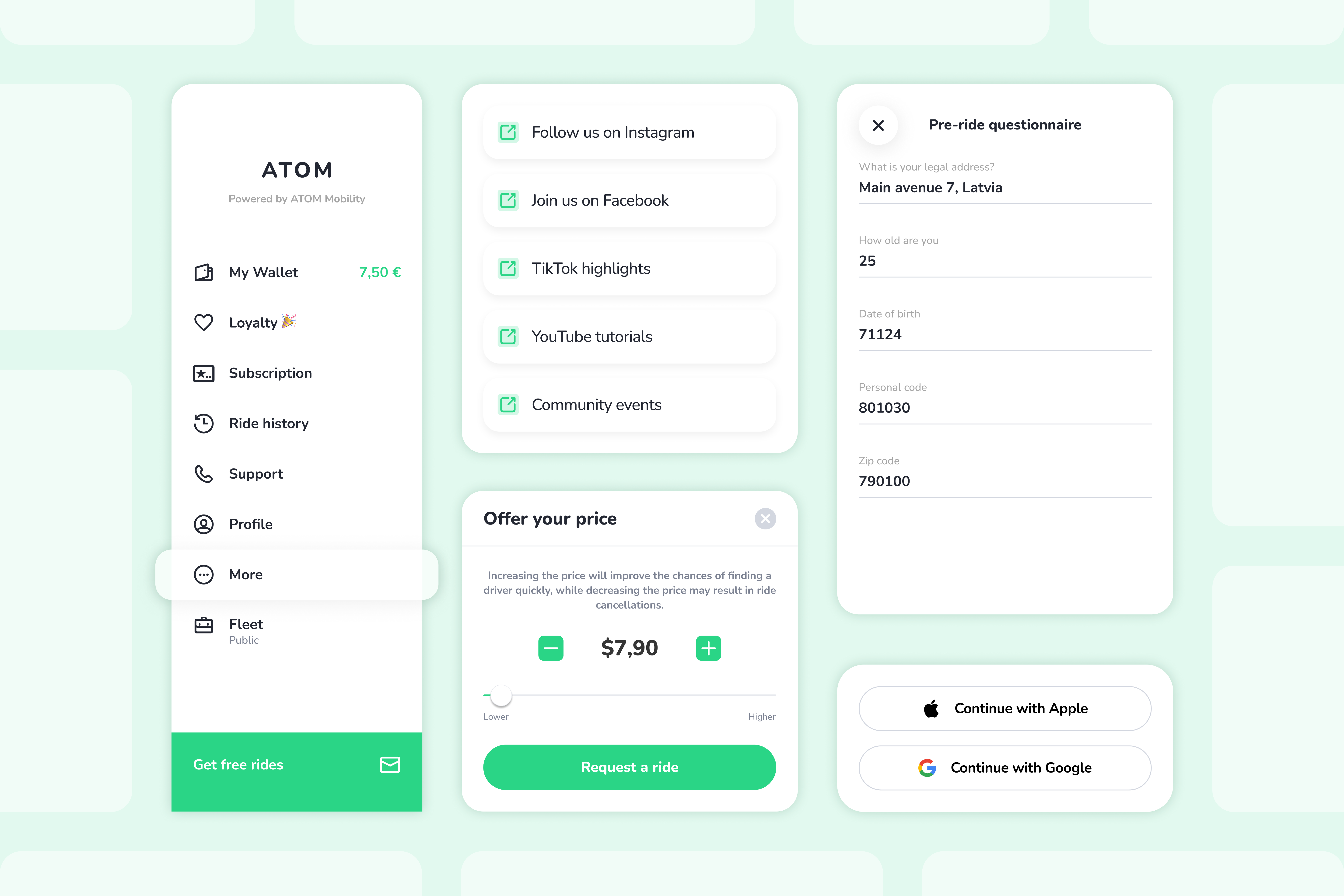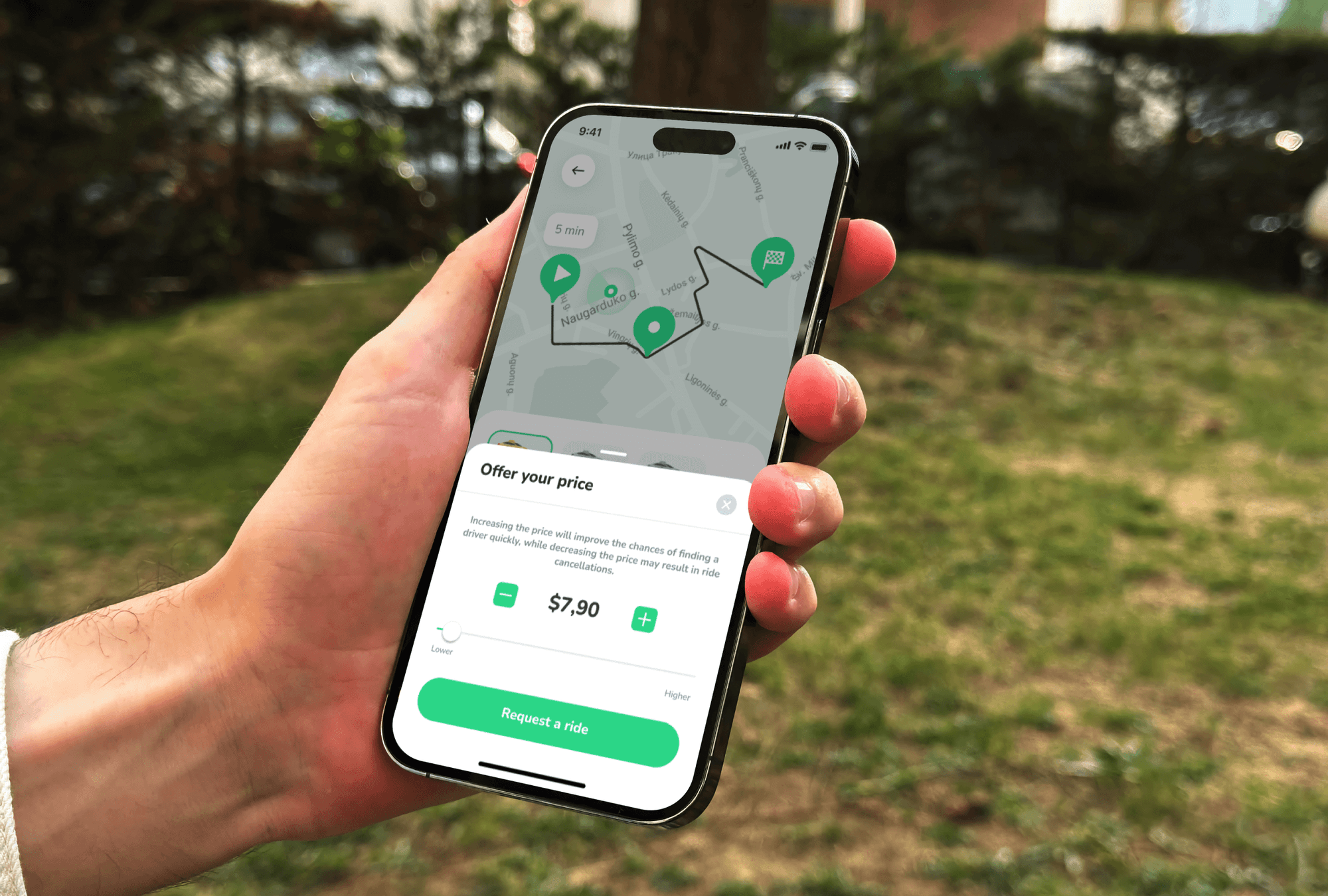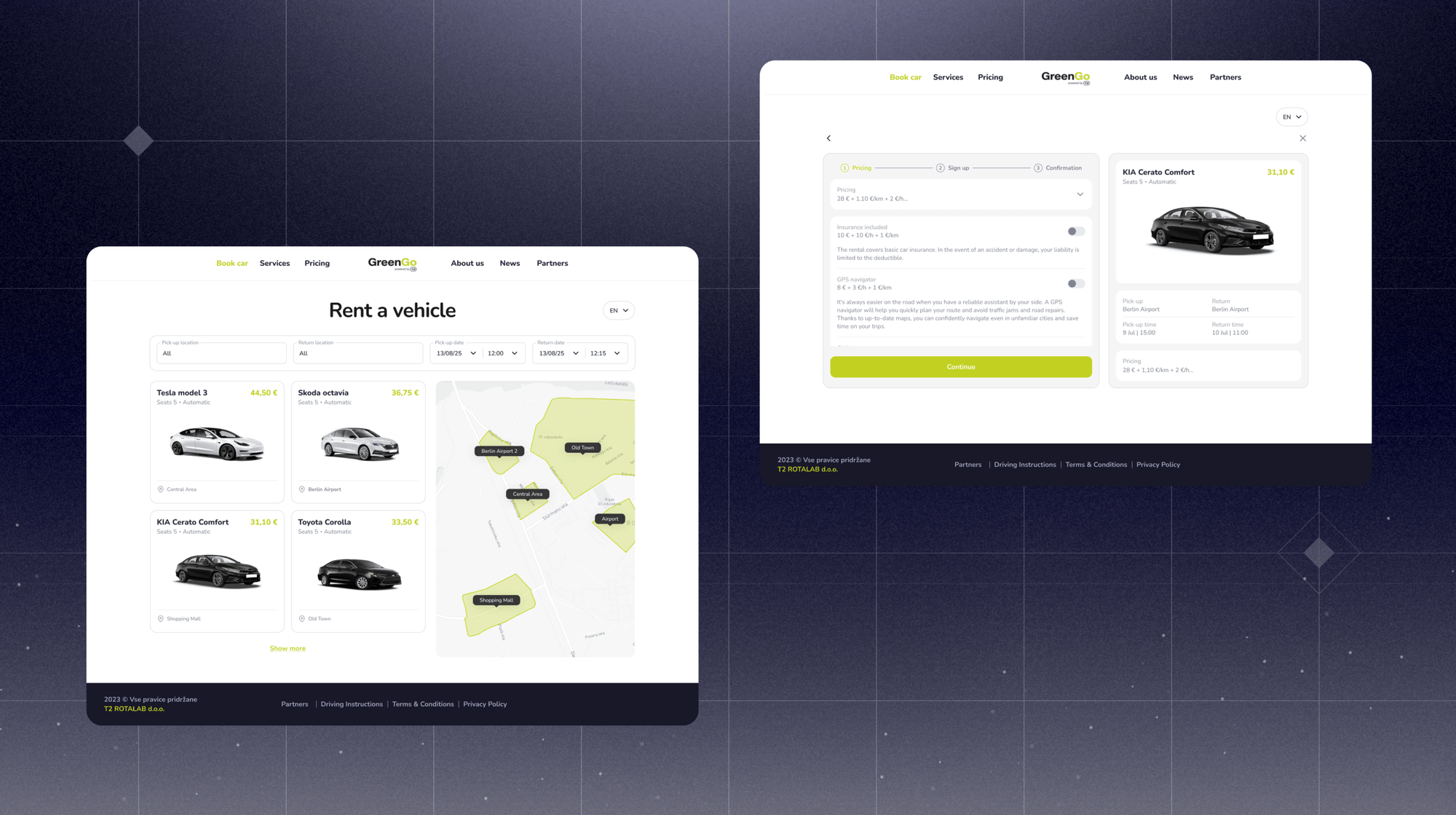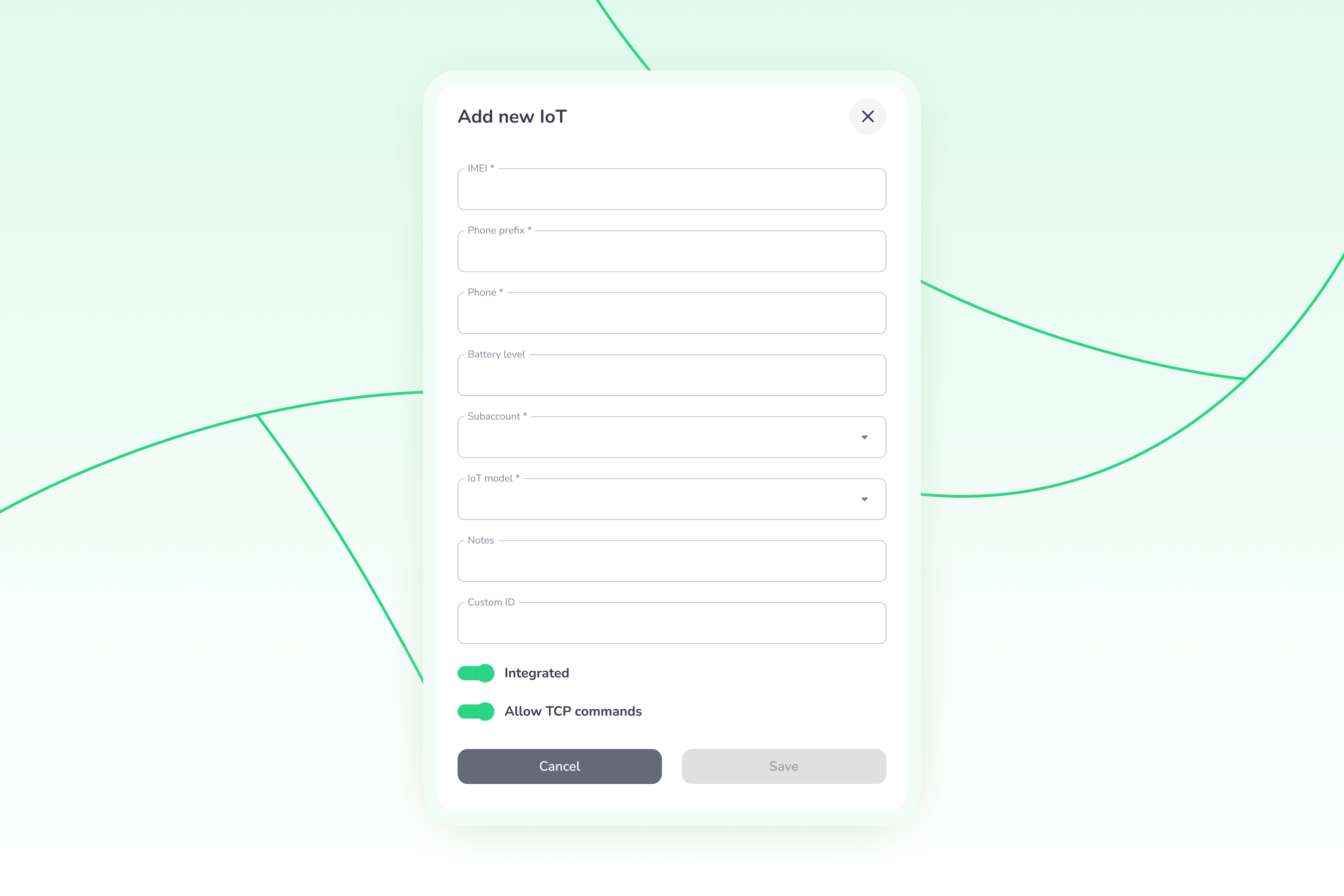
Technology is helping transform the future of urban transportation by influencing what mobility will look like, and how it will impact the modern city-scape. A recent article by Forbes Technology Council explained that there is a shared consensus around the four key features of future mobility: shared, hybrid, autonomous and electric. The next question becomes, what will mobility services will be available in the coming years? We have done some research to help breakdown the different perspectives on shared mobility as a mode of transportation in the future.
Why electric?

By 2040, electric cars will outsell gasoline-powered cars
Recently consumers have shifted their interest towards electric vehicles as a more sustainable and environmentally conscious option for long-distance travel. Predictions expect electric vehicles to surpass traditional combustion cars within the next 20 years, with 57% of passenger vehicles and more than 30% of global passenger vehicle fleet sales being electric by 2040. With this growth also comes a need for additional charging infrastructure to allow the vehicles to travel further over long distances. Currently there are about 13,000 electric vehicle fast charging stations across the US, compared to roughly 332,000 gas stations. Companies such as Volkswagon, GM and Tesla, have announced they are working on creating charging that will help drive sales in the future. Successful expansion into the market will require cities to develop smart plans that accommodate the needs of electric mobility.
Why shared?
Shared mobility has grown extensively since Uber (2009) and Lyft (2012) first entered the market. More and more operators continue to emerge worldwide, offering at least one ridesharing service to people in over 700 cities. These services are expected to expand even further in the future as a result of increased urbanization, as well as growing concerns around sustainability, economic stability and emissions. A report by the Internet of Things’ analyst firm, Berg Insights, found the number of car-sharing service users will grow from 50.4 million people in 2018 to 227.1 million people in 2023. Offering mobility as a service is helping reduce the number of single-use vehicles on the road, lending itself to a more functional form of travel.
Why autonomous?
A major challenge facing urban drivers is the issue of congestion and traffic jams. In some metropolitan cities, such as London, the problem lead to the enforcement of congestion charges in their most heavily populated neighbourhoods. In effect since 2003, these charges have helped reduce traffic by 30%, will simultaneously generating funds for the city. But is that enough? Autonomous vehicles are believed to be the next step in reducing congestion. A study conducted by researchers at the University of Cambridge found that when a fleet of autonomous vehicles are effectively communicating, keeping traffic moving smoothly, congestion rates could be reduced by 35%.
Why hybrid?
Micro-mobility is the use of small mobility devices, designed to carry one or two people, or ‘last-mile’ deliveries. This goes hand-in-hand with the rising interest in e-scooters and e-bikes that have seen exceptional sales growth in recent years. The combination of electric with single-use, lightweight vehicles is expected to surpass traditional modes of transportation. In their annual technology, media and telecommunications predictions, Deloitte predicted more than 130 million e-bikes will be sold between 2020 and 2023. Compared to the 1.8 million sold in Europe and 185,000 in the US during 2013, this significant increase suggests that e-bikes and other technology like it are the future of mobility.
How are city’s supporting?
Cities across the world have begun adapting strategies to assist with the future of urban mobility. Being the leader in reducing traffic, Singapore introduced Area licencing Scheme in 1975, enforcing a daily toll charge of $3 or $60 monthly for cars entering a central zone area during peak hours. The city experienced success resulting in fewer cars entering the zone during peak hours, a 35 percent increase in carpools and a minimum of $500 million saved by the city that could be used towards infrastructure improvements. The system has since been updated to an Electrical Road Pricing system in order to match the changing demands of the city’s core.
San Francisco has yet to enforce congestion pricing for its traffic heavy neighbourhoods, however, research is being conducted to determine the best solutions for the city. The Emerging Mobility Evaluation Report by the San Francisco Transportation Authority found 90 percent of all motor vehicle collisions are caused by human error, with approximately 80 percent involving some level of inattention. This has lead to a shift towards alternative modes of mobility and potential pilot projects within the city core. San Francisco has become known for its low income bike share programs. Launching in 2013 the Bay Area Bike Share Pilot requires at least 20% of stations be located in low-income communities, with an estimated 320 stations and 4,500 in 2017. Data collected by the Bike-sharing Blog estimates there are twice as many bike-sharing programs in the world as there were in 2014, with nearly 20 times more bikes available for public use.
The doors have opened for industry leaders to start making innovations within auto-mobility, influencing the modern city-scape. In addition to placing restrictions on heavily congested areas, the city of Helsinki has focused its efforts on improving the existing infrastructure and transportation options to encourage people to utilize other modes of mobility. A leader in mobility-as-a-service (MaaS) platforms, the city plans to replace 2.3 billion urban private car journeys annually by 2023. One of the ways it’s begun to accomplish this is through the app Whim. An app developed specifically for Helsinki, Whim provides access to all of the city’s mobility options through a monthly subscription. The future of mobility is at people’s fingertips.
What’s next?
Cities around the world are beginning to explore the possibilities of e-scooters as a means to travel short distances too far to comfortably walk, as well as a potential solution towards reducing the reliance on cars. The city of Tallahassee launched a pilot program in partnership with five major e-scooter companies: Bird, Lime, VeoRide, Spin and Gotch. The purpose is to determine solutions for the major problems being faced, but to also help develop good ridership habits. The companies deployed 200 e-scooters, each capable of travelling 15 mph, under new legislation that allows them to be treated the same as bicycles. With the success of programs such as this, and companies making pledging to maintain social responsibility for user safety, e-scooters as a primary mode of mobility are on the rise.
Nuro, a self-driving start-up, is one of the few companies to currently have a fleet of fully driverless vehicles operating on public roads. In February 2019, the company secured roughly $1 billion in additional funding from SoftBank allowing them to partner with the grocery-store chain Kroeger’s for a pilot project. The pilot service has been delivering groceries in Houston, Texas since March 2019, with expansions to include other goods like Domino's Pizza and Walmart products. As of right now the fleet stands at about 75 vehicles, with plans to go public in 2020. By introducing fully automated vehicles into the market, the number of people on the road will be reduced, optimizing efficiency and offering greater protection from potential collisions or incidents.

Nuro self-driving vehicle
In addition to reducing traffic in major cities, mobility companies are also focusing their resources on addressing concerns of energy consumption and emissions. The smart scooter mobility company, Gogoro, aims to leverage the power of technology in order to change the way technology is consumed and transform how cities operate to improve sustainability. Their first fleet of smart scooters launched in 2015, delivering a high performance electric riding experience to uses in Taiwan. The company also established a network known as the Gogoro Energy Network in Taipei offers more than 1,581 battery swap stations and supports over 199,478 battery exchanges every day. In Europe, a fleet of 3,500 emissionless smart scooters were released across three major countries in 2018, helping reduce CO2 emissions by 123,655 tons and displacing more than 58,731,863 liters of gasoline. By leveraging technological progress and innovations in modern infrastructure, Gogoro is becoming a leader in transportation solutions.

Electric scooter Gogoro with swappable batteries
Companies, like Tortoise, are looking to expand the capabilities of scooters even further by introducing fleets that can move autonomously across a city and reposition themselves, without a rider. The goal is to tackle the biggest challenge currently facing operators: relocating scooters. Tortoise plans to use autonomous technology combined with teleoperation to reposition and rebalance dockless, shared e-scooters in cities. The initial deployment will include between 50 to 100 scooters per operator in each market with the intention to equip every fleet with the ability to autonomously reposition themselves. Autonomous micro-mobility like e-scooters and e-bikes are believed to be the start for creating smarter, more technologically advanced cities.
How can we help?
As both industry leaders and cities around the world are finding new ways to support the rising trend of micro-mobility, we at ATOM Mobility want to help entrepreneurs looking to enter the market. We believe that shared mobility is the future of transportation, offering assistance with integrating industry-leading vehicles ready for shared mobility, including kick scooters, scooters, bikes, mopeds, cars and more. Our customers have an excellent grasp on the current needs of local markets, and we allow them to focus on marketing and operations, while taking care of the technology.
Sources:
https://www.bbc.com/news/technology-33183031
https://www.corporateknights.com/channels/transportation/sharing-road-canadian-cities-driving-progress-shared-mobility-15593076/
https://www.forbes.com/sites/forbestechcouncil/2019/11/22/four-keys-to-future-mobility-shared-hybrid-integrated-and-electric/#3feea979339d
https://edition.cnn.com/2019/07/18/cars/electric-car-market-sales/index.html
https://about.bnef.com/electric-vehicle-outlook/
https://www.businessinsider.com/ubers-history#june-2016-kalanick-proclaims-that-uber-was-profitable-in-hundreds-of-cities-globally-but-that-the-money-was-being-reinvested-in-its-war-against-chinese-rival-didi-the-company-said-at-the-time-that-it-was-losing-1-billion-each-year-in-its-fight-against-didi-34
https://www.cnbc.com/2019/11/08/top-ride-sharing-apps-in-europe-asia-south-america-africa-and-usa.html
https://iotbusinessnews.com/2019/11/14/60333-the-public-carsharing-fleet-reached-332000-vehicles-worldwide-in-2018/
https://www.bbc.com/news/world-us-canada-47874725
https://www.sciencedaily.com/releases/2019/05/190519191641.htm
https://assets.publishing.service.gov.uk/government/uploads/system/uploads/attachment_data/file/846593/future-of-mobility-strategy.pdf
https://www2.deloitte.com/content/dam/insights/us/articles/722835_tmt-predictions-2020/DI_TMT-Prediction-2020.pdf
https://eresources.nlb.gov.sg/infopedia/articles/SIP_777_2004-12-13.html
https://eresources.nlb.gov.sg/infopedia/articles/SIP_832__2009-01-05.html
http://sfcta.org/sites/default/files/2019-03/Emerging%20Mobility%20Studies_11.pdf
https://www.sfmta.com/getting-around/bike/bike-share
https://www.businessinsider.com/bike-sharing-programs-doubled-since-2014-public-bikes-charts-2018-7?IR=T
https://www.smartcitiesworld.net/news/news/helsinki-leads-in-mobility-as-a-service-3308
https://whimapp.com/
https://eu.tallahassee.com/story/news/2019/07/15/electric-scooters-tallahassee-florida-bird-scooters-rental-gotcha-lime-spin-veoride-escooters/1708270001/
https://www.wctv.tv/content/news/Five-companies-launch-e-scooters-in-Tallahassee-during-pilot-program-512748851.html
https://nuro.ai/product
https://www.wired.com/story/softbank-nuro-self-driving-investment/
https://qz.com/1644476/nuro-will-deliver-dominos-pizza-with-its-robots-in-houston/
https://www.theverge.com/2019/12/10/21004678/nuros-driverless-delivery-robots-walmart-houston
https://medium.com/nuro/new-rules-of-the-road-for-california-and-autonomous-vehicles-2fa26a1159cb
https://www.gogoro.com/about/
https://www.tortoise.dev/
https://www.theverge.com/2019/10/15/20910083/tortoise-autonomous-electric-scooters-self-driving-robotics
https://www.fastcompany.com/90417611/it-was-inevitable-the-scooters-are-now-driving-themselves
Click below to learn more or request a demo.

🚀📱2025 was all about automating more and reducing friction across mobility. ATOM Mobility introduced OpenAPI, new sign-in flows, a rental web-booker, smarter fleet automation, and a wide range of new hardware and payment integrations. A faster, more flexible, more scalable mobility platform - built for operators who want to grow.
2025 has been a defining year for shared mobility, digital rentals, and ride-hailing. Competition is stronger, operational costs are rising, and users expect instant, reliable digital experiences. Operators who succeed are the ones who automate more, reduce friction, and stay flexible with hardware, payments, and integrations.
This year, ATOM Mobility shipped a series of features designed to help operators achieve exactly that:
grow revenue, reduce costs, improve fleet quality, and scale into new markets with less complexity.
Here are the 10 most impactful (out of more than 70) features ATOM Mobility released in 2025, and why they matter.
1. OpenAPI (supported by all 3 modules - vehicle sharing, digital rental and ride-hail)

The launch of ATOM’s OpenAPI marks a major step forward for operators seeking greater flexibility, automation, and integration possibilities.
What it is
A fully documented API layer allowing operators and partners to build custom flows, integrations, booking systems, analytics dashboards, or MaaS connections on top of ATOM Mobility.
Who it helps
All verticals: micromobility, car-sharing, moped sharing, rentals, ride-hail, and enterprise partners.
How it works
OpenAPI enables third-party developers to build on top of the ATOM Mobility infrastructure, allowing seamless integrations with external apps, internal tools, and automated workflows. With OpenAPI, operators can extend their service in almost any direction: a partner app (like FreeNow or Uber) can show your vehicles, unlock them, and process payments on your behalf; or internal systems can trigger automated actions - such as sending a survey email after every completed ride. The possibilities are nearly unlimited, giving operators full flexibility to innovate and scale however they choose.
Why it matters
- Enables deeper integrations with partners and local platforms
- Supports custom business logic and automations
- Makes it easier to enter new markets with local-specific requirements
- Opens the door to MaaS distribution and enterprise collaborations
2. Sign-In with Apple & Google - A smoother first-time user experience (all modules)

Across mobility, the registration flow is often the first point of friction. ATOM Mobility introduced modern authentication options to simplify onboarding.
What it is
One-tap sign-in using Apple ID or Google Account instead of relying solely on SMS verification.
Who it helps
All operators - especially those targeting tourists, or markets with unreliable SMS delivery.
How it works
When creating a new account or logging in, users can choose to log in/register using Apple ID or Google Account - this will allow account creation in just 2 taps.
Why it matters
- Faster user onboarding experience -> happier rider -> more frequent rides
- Fewer SMS-related issues (and lower SMS related costs) and failed verifications
- Reduced support load from login problems
3. Multipurpose side menu button (all modules)

What it is
A customizable slot in the app menu where operators can add up to five external links - websites, ecommerce pages, tour pages, extra FAQ pages, social media, partner offers, etc.
How it works
- Enable in Settings → System preferences → External links
- Add titles + URLs
- Links automaticaly appear in the app under “More”
Value for operators
- A space where you can display any information you consider important for the user
- Supports cross-promotion and partnership campaigns
- Allows communication updates without app releases
- Creates additional monetisation opportunities, such as launching your own e-commerce or merchandise shop
4. Pre-ride questionnaire (all modules)

What it is
A form that users must complete before starting a ride - ideal for compliance, reporting, invoicing, or gathering important data.
Who it helps
Operators needing regulatory data, reporting, consent collection, or structured user feedback.
How it works
Create a question (or several) in “Customer form” -> Group questions into a pre-ride form -> Assign a form to specific vehicle models/classes.
Once completed, the customer must answer predefined questions before starting the ride. Their responses appear in both customer and ride exports. For example, you can ask for a personal ID code, legal address, or any other required information.
Value for operators
- Helps meet regulatory or municipal requirements
- Ensures correct invoicing details
- Provides a structured way to capture essential user data
5. Driver revenue auto-distribution (Stripe & Adyen, ride-hail)
What it is
Automatic payout splitting: driver earnings go to the driver’s payout account, and platform commission goes to the operator - all processed automatically after each ride.
Who it helps
Ride-hail operators using Stripe or Adyen.
How it works
- Operator has a Stripe/Adyen merchant account
- Drivers onboard as payout recipients
- After completed rides, payouts split automatically
- Supports mixed payment methods (cash and non-cash)
Value for operators
- Reduces manual payout work
- Minimises accounting errors
- Improves driver experience through transparency and instant pay out
- Makes scaling easier when the driver base grow
6. Set a manual vehicle location (vehicle sharing & digital rental)
What it is
A tool to override or manually set a vehicle’s GPS position when IoT data is unavailable (no IoT placed on the vehicle at all) or inaccurate.
Who it helps
Operators with underground parking, poor GPS coverage, or long-term rentals without IoT can use this setup. A typical scenario is long-term bike rental without IoT: the user completes ID verification, payment, and booking in the app, then sees the vehicle assigned to a predefined location (station) where it is picked up and later returned. This serves as a workaround for vehicles that do not support IoT or where adding IoT device is too costly.
How it works
Edit vehicle → update “Location” field. The system assumes this as the correct coordinate. Works for individual vehicles or via mass import.
Value for operators
- Avoids user frustration when vehicles appear in the wrong location
- Supports business modesl with fleets operating without IoT devices
7. Offer your price - rider-controlled pricing (ride-hailing)

What it is
A flexible pricing feature that lets passengers propose their own fare - higher or lower than the system-calculated price, within limits set by the operator. Drivers see the offer instantly and can choose to accept or reject it.
Who it helps
Ride-hailing operators in competitive, price-sensitive, or highly dynamic markets where price shifts demand quickly.
How it works
When requesting a ride, the user selects “Offer your price”. A slider or +/– buttons allow them to adjust the fare within operator-defined boundaries. If the user lowers the price, the app explains that the offer may reduce the chance of driver acceptance.
Drivers see a clear banner showing whether the rider is offering more or less than the standard fare. Drivers can accept or decline based on their preference.
Operators can enable or disable the feature per vehicle class.
Why it matters
- Creates a clear differentiator in markets dominated by fixed-fare competitors
- Helps convert riders who compare multiple apps before booking
- Gives drivers more control over their earnings and decisions, improving transparency and satisfaction
- Supports better ride matching during off-peak hours or less profitable routes
- Allows operators to experiment with more flexible pricing strategies without changing their core fare model
8. Web-booker for digital rental - frictionless bookings directly from your website (digital rental)

What it is
A lightweight, embeddable booking widget that lets customers reserve a rental vehicle directly from your website - without installing the mobile app first. It’s designed to capture spontaneous bookings, convert website visitors, and unify online and in-app rental experiences.
Who it helps
Car, moped, and bike rental operators, as well as hospitality and tourism partners such as hotels, resorts, coworking spaces, real-estate developers, and travel service providers.
How it works
Every operator receives a branded rental URL: merchantname.atommobility.com/rent
Users select their area, vehicle type, and rental period directly in the widget. Once confirmed and the account created, the booking syncs automatically into the ATOM Mobility dashboard. Customers see a confirmation screen with a QR code to open the booking in the mobile app. Payment, ID verification, and vehicle unlock actions are completed in the ATOM Mobility-powered app before the trip begins.
The widget automatically adapts to the operator’s brand color for a visually seamless integration. In the dashboard, each booking displays its source: App, Web, or Booker - helping operators track where rentals originate.
Why it matters
- Converts first-time users browsing your website into paying customers - without forcing an app install
- Enables plug-and-play rental flows for partners such as hotels, rental desks, cafés, coworking spaces, or tourist spots
- Supports QR-based rental journeys from physical locations
- Reduces friction for users who want a fast, simple booking experience
- Helps operators expand distribution with minimal effort, unlocking new sales channels
- Unifies online and mobile rental flows under a single backend and operational system
Demo: https://app.atommobility.com/rental-widget
9. Vehicle status change automation (vehicle sharing & digital rental)

What it is
Bad user experiences often happen when several riders encounter the same faulty vehicle. ATOM Mobility now prevents this automatically. Automation rules detect problematic vehicles and instantly set them to “Needs investigation,” hiding them from the user app so the operator can inspect the vehicle before the next rider can take it.
Who it helps
Sharing and rental operators managing medium or large fleets.
How it works
System monitors low ratings, repeated short rides, and user reports. When triggered, it:
- creates a maintenance task
- switches vehicle status
- hides the vehicle from users
Why it matters
- Prevents recurring complaints from the same issue
- Reduces refunds and reputational damage
- Helps maintain a healthier, more reliable fleet
- Automates routine operational checks
10. New integrations (10) - a broader ecosystem for hardware, payments & compliance (all modules)
What was added
2025 brought a wave of new integrations that give operators more flexibility in choosing hardware, payments, charging, and regulatory tools. What was added:
- Ridemovi IoT
- Wave payment gateway
- Linka smart lock support
- 2Hire IoT
- Kuhmute charging stations
- Eskiz.uz OTP service
- Atmos payment gateway
- Chiron API (regulatory)
- Fitrider charging station
- Azericard payment gateway
Why it matters
- Easier entry into markets with local payment or OTP requirements
- More hardware options for scooters, bikes, e-bikes, and cars
- Better compatibility with charging infrastructure
- Reduced integration time when expanding
- Support for regulatory compliance where required
These ten features represent only a small selection of what we delivered this year. In total, our team shipped more than 70 new features, dozens of integrations, and countless small improvements that quietly make the platform faster, more stable, and more enjoyable for operators and end-users every single day. Behind each release is a team focused on one idea: helping entrepreneurs build stronger, more efficient, and more profitable mobility businesses.
And we’re just getting started.
Our 2026 tech pipeline is already packed with ambitious and exciting solutions - from deeper AI-powered automation to smarter fleet intelligence and new tools that will change how operators run mobility services. We're looking forward to pushing the industry even further together.

🛴📡 That smooth ride you just took? It was powered by a whole ecosystem of hardware and software you never saw. From IoT modules in the vehicle to real-time dashboards and rider apps, shared mobility relies on a solid tech stack to stay online, secure, and profitable.
You open an app, spot a scooter on the map, and within seconds it unlocks with a click. You ride off, expecting the battery to be charged, the brakes to work, and the whole process to feel effortless. From the very first ride, shared mobility set the standard: vehicles should always be nearby, ready to go, and the whole experience should feel seamless. What most riders never think about, though, is the complex mix of hardware and software working in the background to make every smooth ride possible.
Why the tech matters
Technology is the baseline for the shared mobility business model. Every ride depends on it. Vehicles need IoT hardware to lock, unlock, and report their status. Connectivity has to be stable so operators always know where assets are and what condition they’re in.
IoT, or the Internet of Things, is the technology that connects physical devices – like scooters, bikes, or cars – to the internet. Each vehicle contains a small embedded device (the IoT module) that sends and receives data through mobile networks. This connection allows operators to remotely control key functions such as locking, unlocking, location tracking, and firmware updates. In short, IoT is what makes a vehicle “smart” and manageable at scale.
On the software side, riders expect apps that feel instant and intuitive, while operators rely on dashboards for fleet health, pricing, and support. Add in the realities of theft, battery swaps, downtime, and local regulations, and the stakes become clear. Without a reliable tech stack, even small failures – a scooter that won’t unlock or a payment that stalls – can quickly break user trust and hurt the business.
Where it began
Over the years, several manufacturers have entered the shared mobility IoT space, offering different hardware configurations, network technologies, and integrations. Companies like Teltonika (Lithuania), Comodule (Estonia), Invers (Germany), OMNI (China) and others produce modules compatible with various vehicle types and connectivity standards. Each provider focuses on specific strengths – some prioritize energy efficiency or compact design, others emphasize global coverage or advanced diagnostics. Choosing between them depends on the type of vehicles, operational scale, and software ecosystem an operator plans to use.
Our partner, Comodule was already developing IoT for micromobility when the Corona pandemic hit. Overnight, cities shifted and everyone needed their own safe, private way to move around. Shared scooters and bikes suddenly went from being a niche service to an essential part of urban transport, and the demand for IoT skyrocketed. For IoT manufacturers, it meant long days in development and manufacturing, pushing hard to deliver reliable devices at scale for brands like Uber, Lime, and Hive.
That sharp rise in demand forced them to grow quickly and gave valuable experience in building technology that could perform under real pressure. Fleets that trusted Comodule devices had a backbone they could rely on: vehicles that could be located, unlocked, secured, and managed internationally. Just as important, the IoT had to integrate seamlessly with software systems (like ATOM Mobility). That’s why building robust API and SDK tools became critical – enabling operators to connect hardware to their platforms, control fleets in real time, and access the information needed to keep moving.
IoT as the brain of the vehicle
Inside every connected scooter or bike sits a IoT module, the “brain” that links the vehicle to the cloud. It connects through cellular networks, constantly sending data about location, speed, and battery status. When a rider taps “unlock” in the app, that command travels through the cloud to the module, which triggers the electronic lock and wakes up the vehicle. The same connection allows operators to set geofenced no-parking zones, push over-the-air updates, or activate a sound alarm if the scooter is being tampered with. Battery sensors inside the module report charging cycles and health, so operators know exactly when a pack needs to be swapped or replaced.
All of this data is streamed in real time to the fleet management system, giving providers the ability to monitor hundreds or even thousands of vehicles simultaneously. For operators, these capabilities mean higher uptime, faster theft recovery, and precise control over the entire fleet – the difference between running a struggling operation and a profitable one.
Selecting the right IoT hardware is a long-term decision that affects the entire fleet’s performance. Operators should evaluate network compatibility (2G/4G/5G/eSIM) and regional coverage, integration options such as open APIs and SDKs, and reliability under different weather conditions. Battery efficiency, after-sales support, firmware update policies, and compliance with standards like CE or FCC also matter. In short, IoT isn’t just a component – it’s the operational backbone of any shared mobility business.
Rising expectations in the market
As shared mobility matured, the bar kept getting higher. New scooter generations came with swappable batteries, sturdier frames, and better onboard electronics. Riders got used to apps that respond instantly, process payments in seconds, and show vehicle availability with pinpoint accuracy.
At the same time, competition rose, not only from global players but also from smaller, local operators launching fleets in their own cities. For these companies, reliable hardware was no longer enough. They needed the software layer that connects everything: smooth rider apps, powerful operator dashboards, and analytics to make smarter decisions. Yet many lacked the time and resources to build software on their own.

Software as the missing piece
As fleets grew and competition intensified, operators realized they did not have time or funds to develop their own software layer. They needed a market-ready platform that ties everything together – apps that riders enjoy using and dashboards that give operators full control of their business. That’s where solutions like ATOM Mobility come in.
Platform connects directly with IoT through APIs and SDKs, so every unlock command, error code, or battery update flows instantly between the rider’s app and the operator’s dashboard. Almost any company can launch a fleet with this stack – from large-scale operators to small, local newcomers.
The power of integration
When hardware and software work seamlessly, the rider experience feels effortless. A simple tap in the app sends a command through the cloud to IoT, which unlocks the vehicle and streams live data back in milliseconds. The operator instantly sees the vehicle’s status in the dashboard: battery level, GPS position, and any error codes.
If the scooter leaves a geofenced area, the system reacts automatically. If maintenance is needed, the alert is flagged before it becomes a breakdown. By combining the hardware with software, fleet providers get one complete ecosystem – a stack built to keep vehicles online and users satisfied.
From seamless rides to smarter cities
From a rider’s perspective, shared mobility should always “just work.” That won’t change. But the technology stack behind it is becoming more sophisticated every year. Stricter regulations demand safer and more transparent services, while cities are pushing for integration into broader Mobility-as-a-Service platforms. IoT and software together provide the data and control that operators need, not only to stay compliant but also to improve fleet efficiency and sustainability and to provide insights for city planning.
For users, that sophistication will translate into something simple: services that are more reliable, safer for everyone on the road, and smarter – with data from real-world usage helping to shape better vehicles, better infrastructure, and better cities in the future.


